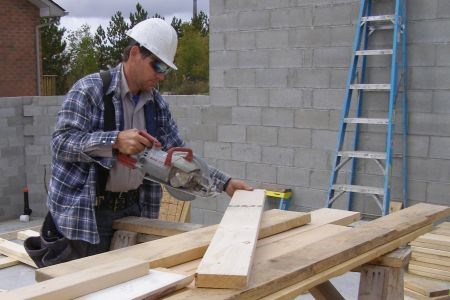Building 18,000 new homes in Guelph by 2031 is an “ambitious” goal that presents a “significant challenge”, but it’s a welcome target in the eyes of the Guelph and District Home Builders’ Association (GDHBA).
“Failure to do so will make it impossible for Guelph to attract and retain the talent it needs to compete in the global economy,” Tom McLaughlin, GDHBA past-president, said in an email to GuelphToday.
“It goes without saying that we are in the middle of (a) new-age urban planning-inflicted generational housing shortage. It is very simple, if Guelph and Ontario does not provide the housing that the market is demanding, the people will just move to where it can be provided.”
On Tuesday, the Minister of Municipal Affairs introduced legislation that proposes a number of changes intended to speed up the approval process for new housing developments and reduce municipal fees collected on those projects – funds put toward the cost of infrastructure needed to support population growth.
The minister also sent letters to the mayors of many of the province’s largest cities asking for municipal councils to “pledge” support for new housing allocations given to those communities.
In the case of Guelph, that’s 18,000 units by 2031.
“All of these changes will allow for the construction of the housing supply the province needs, increasing transparency on the funds collected on the back of new homes, capping fees to the economic conditions of the day and removing roadblocks to adding gentle density,” wrote McLaughlin.
If ultimately approved by the majority PC government, the legislation would implement 50 actions aimed at reducing government fees and speeding up the approval process for new home builds.
Those action items include allowing most single home properties have two additional units built on them without requiring municipal approval (known as inclusionary zoning); development charge and parkland dedication exemptions for affordable homes and inclusionary zoning units as well as “select attainable housing units”; freezing of development charges and conservation authority fees for development permits; and reduced property taxes for apartment buildings.
“On average, 25 per cent of the cost of a new home is composed of government fees, taxes, and charges,” said McLaughlin. “This can add as much as $250,000 to the price of a typical single-family home, and municipalities add more than half of that.”
It’s not known at this time what steps, if any, will be taken by the provincial government to ensure those savings get passed on to the end buyer/renter.
“Some of the changes to how we fund growth are very concerning because that is how we pay for infrastructure in new places or new infrastructure to support growth,” commented Coun. Dominique O’Rourke of Ward 6, where much of the city’s growth is taking place. “Everyone is saying the devil will be in the details. That’s certainly what we’re looking for.”
Several of the pending provincial changes have already been made in Guelph or are late in the process of being considered by council, O’Rourke noted, referring to allowing three units on individual properties (house, accessory unit and basement apartment) and bringing an end to exclusionary zoning, which is part of the draft comprehensive zoning bylaw expected to be returned to council for consideration in the new year.
“We’ve just finished looking at changes to development charges, community benefit charges and parkland dedication. Now it’s set to change again,” said O’Rourke. “Unfortunately, that’s not a good use of city resources to have to be looking at that again and to be looking at how we’re going to finance infrastructure projects that are already in the hopper.
“It’s very challenging for staff and for the city.”
The city’s short-term housing supply includes 6,345 new housing units. That’s made up of areas that are suitably zoning for residential use, as well as land that is draft approved and has registered plans, explained Chris DeVriendt, the city’s manager of development planning, in an email.
Provincial legislation requires the city to maintain a three-year supply of residential units.
“Currently, the city’s short-term supply equals approximately 5.8 years as of year-end 2021,” DeVriendt wrote. “This short-term supply varies each year (it was 5.5 at year end 2020, 6.1 at year end 2019).”
There are several housing projects in the city that are approved but construction hasn’t begun, said O’Rourke, pointing to plans for 1159 Victoria Rd. S. as an example.
A project there was approved by the then-Ontario Municipal Board in 2013, with the draft plan endorsed by council in 2019. Council granted Victoria Village Park Ltd. an extension on its plan in 2022 and again this past September, leaving the approved plan in place until Nov. 22, 2025.
“The lands are ready to go. The services are installed. Sometimes the developers are not not pulling permits,” O’Rourke said of the issue in general. “There’s land that’s available and ready to be built (upon). The city has a role in housing supply, but so do developers and builders.”
It’s a “fallacy” to think developers hold to properties rather than build as soon as possible, said McLaughlin.
“If developments are approved and are financially viable, housing units will be serviced, sold, and constructed without pause,” he said. “The approved land is taking way too long from draft plan approval to building permits.”
